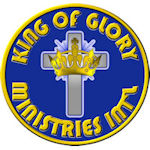3:3 For he has been counted worthy of more glory than Moses, because he who built the house has more honor than the house. 4 For every house is built by someone; but he who built all things is God.
“This man” is the Apostle and High Priest of our confession, Christ Jesus, whom the writer has asked us to consider in the first verse of this chapter. The writer has already shown Him to have more glory than the angels, now he says that He has more glory than Moses. Using the illustration of a house (which can also mean a household or family), he does this in two ways. Firstly, he shows that Christ has greater glory as the builder of the house compared to the house itself. Then, in verses 5 and 6, he goes on to show that Christ has greater glory as the Son in the household compared to a servant.
The writer does not in any way seek to detract from the glory of Moses. He does not suggest that the Jews are wrong to give Moses the honour that they do, or that Moses is unworthy of that honour. He simply states that Christ has greater glory and is worthy of greater honour.
There are many beautiful buildings in the world that people greatly admire – from the ancient pyramids and Colosseum to modern architectural marvels like the Eiffel Tower and Sydney Opera House. Each, however, was designed and built by someone. Not one of them built itself, or came together simply by chance. Nor is any of them given credit for its beauty or function. Each is only a reflection of the intelligence and ability of the one who designed it.
The house here in verse 3 may be Moses himself. Moses had a place of great honour among the Jews. At the time when he came down from receiving the Law from the hand of the Lord on Mt Sinai, he was so saturated with the glory of God that it was necessary to put a veil over his face. Yet for all that, his honour and glory was only second-hand. Had it not been for the hand of God upon his life, Moses would have grown up as just another downtrodden slave among all the slaves of Egypt – that is, if he had survived Pharoah’s decree that all the baby boys be thrown in the Nile. The only reason for Moses’ glory and honour was God, who both created him in the first place and “made” him as the deliverer and leader of Israel.
It is also possible that the house refers to the nation of Israel as constituted under Moses, its earthly head. Israel was a great nation, and could point to many glorious victories in battle. More than that, they were the chosen people of God, the place where He had chosen to dwell on earth. This pride in their position was the very thing that led many Jews, even after they had found the Messiah, to shun the gentiles. Yet Israel, too, was both created and made by God. It was God who gave His promise to Abraham that he would be the father of many nations, and God who fulfilled that promise with the miraculous birth of Isaac. It was God who had brought the slave people out of Egypt and molded them into a nation under Moses. Without God, they would have been just a scattered handful of tribes among all the other tribes of the day. The only source of Israel’s glory and honour was God.
Christ, on the other hand, was glorious in Himself, and honoured for and as Himself. He was not created, nor had anyone “made” Him as Saviour and Lord. More than that, it was He who had “built” both Moses and Israel.
Here again the writer emphasises the divinity of Christ. Everything and everyone is created by somebody. The house is created by the architect and builder. But the architect and builder are in turn created beings. At the beginning of the line of creation stands God. By presenting Christ as the builder who has greater honour than the house – whether we see the house as being Moses himself or the nation of Israel under Moses – the writer is clearly saying that Christ is God. As God, the creator of all things, He obviously has far greater glory, and is worthy of far higher honour, than any of His creation, including Moses.

